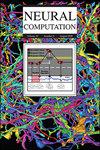触发率模型作为联想记忆:稳健检索的突触设计。
IF 2.1
4区 计算机科学
Q3 COMPUTER SCIENCE, ARTIFICIAL INTELLIGENCE
引用次数: 0
摘要
放电速率模型是应用神经科学和理论神经科学中广泛使用的动态系统,用于描述神经元群体的局部皮质动力学。通过提供神经元活动的宏观视角,这些模型对于研究振荡现象、混沌行为和联想记忆过程至关重要。尽管激发率模型在联想记忆网络中的应用得到了广泛的应用,但在数学上的探索却很有限,现有的研究大多集中在特定的模型上。相反,完善的联想记忆设计,如Hopfield网络,缺乏放电率模型固有的关键生物学相关特征,包括反映长期增强和长期抑制作用的正性和可解释的突触矩阵。为了解决这一差距,我们提出了一个通用框架,以确保重新缩放的记忆模式作为发射速率动力学中的稳定平衡的出现。此外,我们还分析了记忆在局部和全局渐近稳定的条件,为构建生物学上可信和健壮的联想记忆检索系统提供了见解。本文章由计算机程序翻译,如有差异,请以英文原文为准。
Firing Rate Models as Associative Memory: Synaptic Design for Robust Retrieval
Firing rate models are dynamical systems widely used in applied and theoretical neuroscience to describe local cortical dynamics in neuronal populations. By providing a macroscopic perspective of neuronal activity, these models are essential for investigating oscillatory phenomena, chaotic behavior, and associative memory processes. Despite their widespread use, the application of firing rate models to associative memory networks has received limited mathematical exploration, and most existing studies are focused on specific models. Conversely, well-established associative memory designs, such as Hopfield networks, lack key biologically relevant features intrinsic to firing rate models, including positivity and interpretable synaptic matrices reflecting the action of long-term potentiation and long-term depression. To address this gap, we propose a general framework that ensures the emergence of rescaled memory patterns as stable equilibria in the firing rate dynamics. Furthermore, we analyze the conditions under which the memories are locally and globally asymptotically stable, providing insights into constructing biologically plausible and robust systems for associative memory retrieval.
求助全文
通过发布文献求助,成功后即可免费获取论文全文。
去求助
来源期刊

Neural Computation
工程技术-计算机:人工智能
CiteScore
6.30
自引率
3.40%
发文量
83
审稿时长
3.0 months
期刊介绍:
Neural Computation is uniquely positioned at the crossroads between neuroscience and TMCS and welcomes the submission of original papers from all areas of TMCS, including: Advanced experimental design; Analysis of chemical sensor data; Connectomic reconstructions; Analysis of multielectrode and optical recordings; Genetic data for cell identity; Analysis of behavioral data; Multiscale models; Analysis of molecular mechanisms; Neuroinformatics; Analysis of brain imaging data; Neuromorphic engineering; Principles of neural coding, computation, circuit dynamics, and plasticity; Theories of brain function.
 求助内容:
求助内容: 应助结果提醒方式:
应助结果提醒方式:


